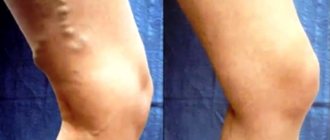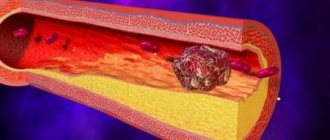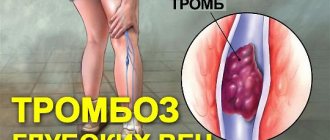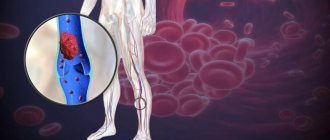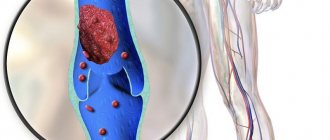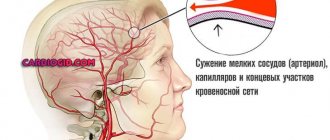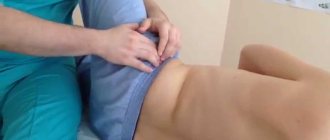Among vascular diseases, one of the most serious is venous thrombophlebitis of the cubital vein, in which the vascular walls are affected as a result of the development of an active inflammatory process. As a result, the veins narrow, closing the lumen.
Cubital thrombophlebitis comes in different forms. The most common of them and occurring in a mild form is thrombophlebitis of the cubital vein. In this case, the veins under the skin on the arms are affected. My patients used a proven remedy that allows them to get rid of varicose veins in 2 weeks without much effort.
A peculiarity of the course of this disease is the absence of pus formation, which determines the likelihood of restoration of damaged veins in a relatively short period of time. In some cases, a ten-day period is sufficient for this.
Causes
Like any other disease, the development of thrombophlebitis has a number of specific reasons.
The most common is the administration of medications that act as irritants. One of them is ristomycin. Some effects on the vascular walls are observed when a catheter is inserted.
Thrombophlebitis can be caused by reasons such as deformation of the venous wall caused by injuries due to pressure. In addition, the development of this disease often occurs against the background of dangerous infectious diseases, such as:
- sepsis;
- pneumonia;
- pulmonary tuberculosis;
- typhus;
- paralysis;
- injuries;
- recent birth;
- and a number of others.
Slow blood flow contributes to the development of this disease at an accelerated pace. This same condition is often the cause of heart disease.
Another characteristic sign of cubital thrombophlebitis is increased blood clotting, which is a consequence of changes in its chemical composition. As a rule, this process is accompanied by such manifestations as:
- vomit;
- diarrhea;
- long-term treatment with diuretics, both natural and chemical origin.
It is worth noting that infectious agents do not occur in every case. According to research by scientists, the likelihood of allerization occurring inside the veins at the cellular level has been proven.
In most cases, the occurrence of thrombophlebitis of the cubital vein is influenced by several factors.
In medical practice, the presence of a disease is often stated:
- with functional disorders of the heart muscle;
- in the period after surgery.
Most patients, after surgical operations, have limited movements for some period of time, which does not have the best effect on their condition.
In addition, protective mechanisms are activated in the body, resulting in increased blood clotting. In this situation, thrombokinases are formed from tissues that have been damaged.
Treatment of thrombophlebitis
The treatment regimen for thrombophlebitis is developed individually for each patient. Therapy includes:
- elimination of the inflammatory process;
- strengthening blood vessels and veins;
- carrying out measures to prevent the formation of blood clots.
Severe patients with thrombosis are prescribed bed rest, which usually involves elevating the affected limb and drug treatment.
Vishnevsky ointment, Diclofenac, Keptoprofren have excellent anti-inflammatory and anti-edematous effects.
The drugs can be prescribed both in tablet form and in ointments, gels and suppositories.
In addition, for cubital thrombophlebitis on the arm, medications can be used to dissolve blood clots, one of them is Wobenzym.
The treatment of thrombosis itself is reproduced through endoscopy by sealing the veins.
For a similar purpose the following can be used:
- laser coagulation;
- obliteration;
By introducing sclerosing agents, surgeons can reproduce the removal of a blood clot using a catheter.
In recent years, a method such as hirudotherapy has become popular.
A proven method of treating varicose veins at home in 14 days!
Symptoms of the disease
A number of specific signs indicate the presence of the disease. Moreover, this also applies to the cubital form of the disease.
One of the main symptoms is the occurrence of painful sensations that occur at some distance from the damaged area.
In addition, in almost every case it is possible to detect swelling and hematoma formation on the skin.
By palpation in such cases, it is possible to identify small-sized balls. And a violation of motor function is indicated by pain, the nature of which in most cases is sharp.
As for body temperature, it can be increased both generally and locally.
How does it manifest?
With this condition, the patient often shudders.
Symptoms of thrombophlebitis are divided into general and local. The first include the following signs:
- temperature increase;
- feeling of weakness;
- chills;
- headache;
- lack of appetite.
Local manifestations are characterized by the following symptoms:
- The pain at the site of the skin lesion intensifies.
- Swelling and cyanosis appear in the area where the blood clot forms.
- The vein becomes very hard to the touch and painful.
Consequences of pathologies and diseases leading to illness
Thrombophlebitis can be quite serious and even life-threatening.
Chronic lack of nutrition in the legs and arms leads to swelling and the development of a terrible disease - trophic ulcer.
In order to understand the situation in more detail, it is recommended to consider special cases of thrombosis encountered in practice:
- the formation of a blood clot in the lower limb in the calf area, which is transported to the thigh vein.
In this situation, the thrombus can rise through the flow of venous blood from the calf muscle into the femoral vein, into the valveless vessel of the iliac vein, and even into the large vein that opens into the right atrium, in which venous blood is collected. Thus, the formation of ascending thrombophlebitis occurs.
In medical practice, there are known cases of thrombophlebitis of the inferior vein in the event of compression by a cancerous tumor with damage to the kidneys or pulmonary organs. These manifestations are characterized by an extremely severe course when congestion occurs in all internal organs.
Thrombophlebitis can occur with:
- chronic cholecystitis;
- liver pathologies such as hepatitis and cirrhosis.
These manifestations are expressed by paroxysmal pain in the abdominal area, accompanied by an enlargement of the spleen. In this case, intestinal bleeding may occur.
The same can be said about the esophagus. In this case, it is on the abdomen that enlarged veins become noticeable, especially in the navel area.
Features of the disease
As a rule, thrombophlebitis is understood as an inflammatory process in combination with thrombus formation, which is found in the superficial veins of the body. Cubital thrombophlebitis is a lesion of the saphenous veins in the arm, in which, after developing inflammation, a blood clot is formed, leading to stenosis of the vessel of varying severity.
In comparison with thrombophlebitis of the veins of the lower extremities, this disease is considered less dangerous. If thrombus formation in the legs most often leads to the appearance of floating blood clots, which greatly increase the risk of pulmonary embolism and death, then the consequences of thrombosis of the superficial veins of the arms are usually less severe. Typically, the patient seeks emergency help due to impaired arm function and severe pain. However, sometimes thrombophlebitis spreads to the deep veins, which threatens the appearance of migrating blood clots. It is also possible to develop chronic (recurrent) thrombophlebitis, which disrupts tissue trophism and leads to serious changes in the blood circulation of the upper extremities.
The causes of thrombophlebitis may be as follows:
- congestive (arise due to disruption of the valvular apparatus of the veins);
- inflammatory (caused by inflammation, infection, injections, allergies, vascular injury);
- caused by hemostasis disorders (appear due to oncological pathologies, blood diseases, metabolic disorders).
According to the type of localization, the thrombus can be parietal, occlusive, floating (rare), mixed.
Cubital thrombophlebitis on the arm
Special attention requires consideration of such a disease as cubital thrombophlebitis of the upper extremities.
Cubital thrombophlebitis on the arm is a disease in which the veins under the skin are affected. The occurrence of this disease is caused by intravenous administration of drugs that cause irritation.
Reproduction of diagnostics is carried out on the basis of a detailed examination of patients by a surgeon. The results of clinical blood tests (increased ESR) confirm the diagnosis.
Modern diagnostic devices are also used today. The disturbed shape of the veins, the direction and speed of blood flow are examined using ultrasound. For the same purpose, the following can be done:
- phleboscintigraphy;
- phlebography;
- MRI;
- multislice tomography.
A phlebologist conducts an examination, makes a diagnosis, provides advice and treatment.
At the discretion of the specialist, fluorography may be prescribed to detect the presence of artery thrombosis in the lungs.
One of the frequently diagnosed diseases is cubital thrombophlebitis on the arm and lower extremities.
Carrying out diagnostics
Usually, it is not difficult for an experienced surgeon, phlebologist, or angiosurgeon to assume a diagnosis of “thrombophlebitis”. Characteristic symptoms, as a rule, unmistakably indicate this pathology, especially if there is an appropriate medical history. To clarify the diagnosis and search for the causes of the disease, the necessary examinations are prescribed from the following list:
- Ultrasound of veins with Dopplerography or ultrasound angiography of the upper extremities;
- analysis of coaulogram indicators;
- phleboscintigraphy;
- phlebography;
- general blood analysis;
- markers of thrombosis.
Thanks to ultrasound and angioscanning, the condition of the walls of blood vessels and the lumen of the veins is assessed, the presence of a blood clot, its type, size and tendency to break off is revealed. It is important to differentiate cubital thrombophlebitis from cubital syndrome. The cause of the latter is damage to the ulnar nerve; the symptoms can be very similar, but the therapy can be completely different. Also find out the symptoms of a broken blood clot in the leg
Read also: Thrombophlebitis live healthy
Prevention and forecast for the future
It is quite difficult to completely get rid of acute thrombophlebitis, but this can be done if a number of comprehensive measures are applied to treat the disease. Strict adherence to all doctor’s prescriptions is the path to success. After drug treatment is completed, it is important for the patient to continue to follow a therapeutic diet, take vitamins, lead a healthy lifestyle and not get involved in sports that put stress on the lower extremities.
Acute thrombophlebitis of the external and deep veins of the lower extremities in the treatment of the disease and its proper prevention may not cause discomfort at all, if you do not pay attention, but simply follow the advice and prescriptions of the doctor. It is important to understand that if some method or method of combating the disease does not improve, even after long-term use, then it is better to abandon such medicine, opting for an alternative method. The effect of the medications should be felt already on the 2-3rd day of administration; if the patient does not feel this, then it is important to change the drug.
It is important to discuss any innovations or adjustments in therapy with your doctor. It is a careful approach to treatment that will allow you to cope with the disease and prevent its relapse. In order to prevent varicose veins and thrombophlebitis, you should periodically take a course of medications aimed at improving blood circulation, strengthening venous walls, and use traditional medicine recipes to stimulate vascular tone. It is necessary to maintain a comfortable weight, protect your legs from excessive stress, enrich your diet with vitamins, try to prevent the development of serious diseases, and strengthen your immune system. Compression hosiery, including stockings and knee socks, will also help:
Possible complications
If the patient does not receive treatment or it does not have an effect, the process may spread to the veins located in the cranial cavity. These are special vessels that pass through the dura mater. They are called venous sinuses.
The figure shows the veins of the face and the venous sinuses of the cranial cavity
- 27 facial vein
- 21-angular vein
- 20th inferior ophthalmic vein
- 18 cavernous sinus
The process spreads through the inferior ophthalmic vein, which connects the cavernous sinus with the angular vein. In this case, inflammation of the fatty tissue of the orbit is observed. Doctors call this condition orbital phlegmon.
Signs of orbital phlegmon
In the photo: phlegmon of the orbit and inflamed facial vein.
It is manifested by swelling and redness of the eyelids. The vessels of the conjunctiva are dilated, and it itself is very swollen. The eyeball is motionless and protrudes in front compared to the healthy eye.
There is a restriction in eye mobility. The pupil is usually dilated, and dilated veins are visible when examining the fundus. If the optic nerve is involved in the process, the patient notices a decrease in vision. The general condition of the patient is serious.
Against this background, thrombosis of the cavernous sinus develops. Sometimes it can develop without previous inflammation of the orbital tissue.
Signs of cavernous sinus thrombosis
Bilateral cavernous sinus thrombosis
Symptoms of cavernous sinus lesions are very variable and depend on the location of thrombosis and the volume of the thrombus. The most common symptoms are severe headaches, confusion, or loss of consciousness. Nausea and vomiting are common.
Ocular symptoms are similar to orbital phlegmon. Sinus thrombosis is supported by damage to both orbits, swelling in the temple or mastoid area, and smoothness of the nasolabial fold on the affected side. To distinguish between these conditions, additional examinations are carried out.
Thrombosis of the cavernous sinus can lead to the development of meningitis, meningoencephalitis and sepsis. The mortality rate, even with the right medical tactics, is 28%.
Creams and ointments for thrombophlebitis
Recipes offered by traditional medicine will help to strengthen the immune system while simultaneously affecting thrombophlebitis. These can be creams for varicose veins or ointments made by the patient himself, using herbs, flowers, and medicinal plants. It is only important to consult with your doctor about the use of the chosen products.
Traditional treatment for the treatment of acute thrombophlebitis most often uses:
- horse chestnut – to improve blood circulation;
- chamomile – to relieve inflammatory processes;
- coltsfoot - to strengthen the venous walls;
- calendula - for disinfecting the skin;
- aloe – to improve vascular patency;
- carrot tops – to reduce inflammation;
- Kalanchoe - to stimulate the tone of blood vessels and veins.
Doctors recommend that many patients undergo hirudotherapy. This is a treatment with leeches, which has repeatedly proven its effectiveness if the procedure is carried out in courses of at least 12 days. You need to seek help from professionals who work certified and have a medical education. It is important to apply leeches to a person’s legs according to a certain pattern, which only a doctor can establish for a particular patient.
Among other things, the patient will have to give up bad habits, breathe a lot of fresh air, get enough sleep and lead a healthy lifestyle. It is an orderly daily routine, timely sleep and proper nutrition that contribute to the patient’s speedy recovery. If possible, the patient can be sent to health resort treatment, where he will be prescribed a number of physiotherapeutic procedures that will help thrombophlebitis to recede once and for all.
Symptoms
Superficial thrombophlebitis begins with slight redness of the affected area. As the inflammation develops, it spreads to the entire vein, and as a result it protrudes above the surface of the skin in the form of a cord that follows the shape of the vessel. Sometimes the disease also affects smaller veins that extend from the affected area.
The skin of the lower extremities swells, the patient experiences incessant itching, and the pain is of a pulsating, burning nature.
The person's general condition is gradually deteriorating. The temperature can reach 38 degrees, chills and sleep disturbances appear. With the addition of an infectious process, an abscess or sepsis may develop.

